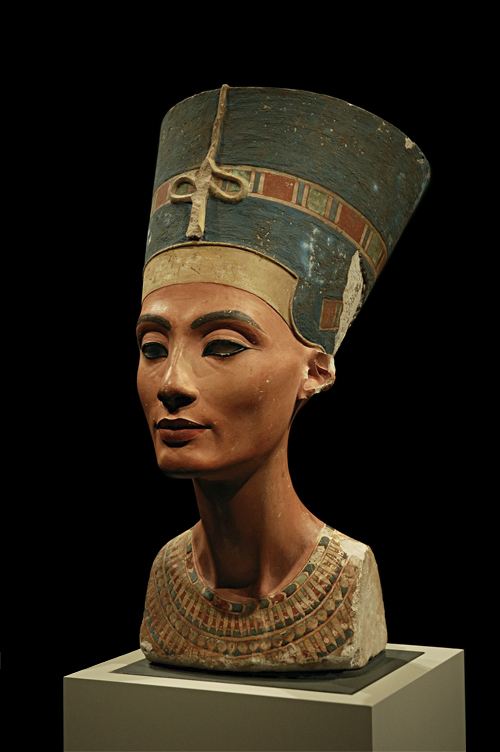|
Metjen
Metjen (also read as Methen) was an ancient Egyptian high official at the transition time from 3rd Dynasty to 4th Dynasty. He is famous for his tomb inscription, which provide that he worked and lived under the kings (pharaohs) Huni and Sneferu. Identity Family According to his own tomb inscriptions, Metjen was a son of the high official Inpu-em-Ankh, a judge at the royal court of justice and a royal scribe. Metjen's mother was a high priestess named ''Neb-senet''. Metjen also had children, which he indirectly mentions, but their names are not handed down.Toby A. H. Wilkinson: ''Early Dynastic Egypt''. Routledge, London/New York 2001, , p. 93, 112, 125 & 147.Wolfgang Helck: ''Untersuchungen zur Thinitenzeit'' (= ''Ägyptologische Abhandlungen'', Vol. 45). Harrassowitz, Wiesbaden 1987, , p. 268–274. Titles As a high-ranking official, Metjen bore several elite titularies: * ''Confidant of the king'' (Egyptian: ''Rekh-neswt''). A title that allowed Metjen to receive aud ... [...More Info...] [...Related Items...] OR: [Wikipedia] [Google] [Baidu] |
Statue Of Metjen
The Statue of Metjen is on display in the Egyptian Museum of Berlin, Egyptian Museum in Berlin and has the inventory number ÄM 1106. The statue was discovered at Abusir in Metjen's mastaba by the Egyptian expedition (1842–1845) under the direction of the Prussian scholar Karl Richard Lepsius. The statue and the mastaba were bought to the museum in Berlin. The statue is an early example of an Egyptian statue belonging to a private individual. Metjen lived at the end of the Third Dynasty and the beginning of the Fourth Dynasty (around 2600 BC). The statue is made of granite and about 47 cm high. It is datable under king Snofru. Metjen is shown sitting on a chair. His right hand forms a fist and is placed on the chest, the left hand is placed on the leg. Metjen wears short curly hair. On the sides of the chair are inscriptions providing Metjen's name and his titles. The statue was once placed in the serdab of the mastaba and was therefore only visible via a small hole in the wall. ... [...More Info...] [...Related Items...] OR: [Wikipedia] [Google] [Baidu] |
Huni
Huni (original reading unknown) was an ancient Egyptian king and the last pharaoh of the Third Dynasty of Egypt during the Old Kingdom period. Following the Turin king list, he is commonly credited with a reign of 24 years, ending c. 2613 BC. Huni's chronological position as the last king of the third dynasty is seen as fairly certain, but there is still some uncertainty on the succession order of rulers at the end of the 3rd dynasty. It is also unclear under which Hellenized name the ancient historian Manetho could have listed him in his historical writing ''Aegyptiacae''. Most possibly he is to be identified with the Hellenized name Aches, as Winfried Barta proposes. Many Egyptologists believe that Huni was the father and direct predecessor of king Sneferu, but this is questioned by other scholars. Huni is seen by scholars as a confusing figure in Egyptian history, because he was long remembered in Egyptian traditions, but very few documents, objects or monuments ... [...More Info...] [...Related Items...] OR: [Wikipedia] [Google] [Baidu] |
Nimaethap
Nimaathap (also read as Nima'at-Hapi and Nihap-ma'atSilke Roth: ''Die Königsmütter des Alten Ägypten von der Frühzeit bis zum Ende der 12. Dynastie'' (= ''Ägypten und Altes Testament'', vol. 46). Harrassowitz, Wiesbaden 2001, , p. 383.) was an ancient Egyptian queen consort at the transition time from 2nd Dynasty to 3rd Dynasty. Nimaathap may have acted as regent for her son Djoser.Joyce A. Tyldesley, Chronicle of the Queens of Egypt: From Early Dynastic Times to the Death of Cleopatra, Thames & Hudson, 2006 She is known to have enjoyed a long-lasting mortuary cult.Joyce Tyldesley: ''Chronicle of the queens of Egypt: from early dynastic times to the death of Cleopatra''. Thames & Hudson, London 2006, , p. 25 & 35 - 39. Attestations Nimaathap's name appears on clay seal impressions discovered mostly in the tomb of king (pharaoh) Khasekhemwy, the last ruler of the 2nd dynasty. Other seals were found at Beit Khallaf at the burial sites of the mastaba tombs ''K1'' and ''K2'' ... [...More Info...] [...Related Items...] OR: [Wikipedia] [Google] [Baidu] |
Pehernefer
Pehernefer (also written Peher-nefer) is the personal name of an ancient Egyptian high official, who held office under the reigns of the pharaohs Huni and Sneferu, in the time between the end of 3rd Dynasty and the beginning of the 4th Dynasty during the Old Kingdom period.Harco Willems: ''Historical and Archaeological Aspects of Egyptian Funerary Culture: Religious Ideas and Ritual Practice in Middle Kingdom Elite Cemeteries''. BRILL, Leiden 2014, , p. 22-23. Identity Career Everything known about Pehernefer, including his high titles and his career, comes from tomb inscriptions. These reveal that he held high positions, such as:Wolfgang Helck: ''Untersuchungen zur Thinitenzeit'' (= ''Ägyptologische Abhandlungen (ÄA)'', vol. 45). Harrassowitz, Wiesbaden 1987, , p. 274 & 289.Toby A. H. Wilkinson: ''Early Dynastic Egypt''. Routledge, London 2002, , p. 109, 110, 114, 119 and 121.Hratch Papazian: ''Departments, Treasuries, Granaries and Work Centers''. In: Juan Carlos Moreno ... [...More Info...] [...Related Items...] OR: [Wikipedia] [Google] [Baidu] |
Akhetaa
Akhetaa (also written Achtiaa and Aa-Akhti) was an ancient Egyptian high official during the mid to late 3rd Dynasty ( Old Kingdom period). He is mostly known for his tomb inscriptions, which refer to various seldom used titles as well as to the shadowy king Nebka, in whose cult Akhetaa served. Identity Family Akhetaa was married to the ''confidant of the king'', ''Meretenes''. This lady is possibly the first of the Old Kingdom who was honoured with the female version of the aristocratic title "confidant of the king". Titles As a high-ranking official and priest, Akhetaa bore several elite and pious titularies: * Confidant of the king (Egyptian: ''Rekh-neswt''). * Companion of the royal house (Egyptian: ''Semer-per-nesw''). * Great one of the 'ten of Upper Egypt (Egyptian: ''Wer-medj-shemaw''). * Privy to all secrets and affairs of the king (Egyptian: ''Herj-seshet-neb-hety-nebef-en-nesw''). * Director of the food menu (Egyptian: ''Kherep-seh''). * Director of the twin ba ... [...More Info...] [...Related Items...] OR: [Wikipedia] [Google] [Baidu] |
Khabawsokar
Khabawsokar (also read Khabawseker) was an Ancient Egyptian high official during the early to midst 3rd dynasty. He is famous for his tomb inscription and his unique nickname.Peter Jánosi: ''Die Gräberwelt der Pyramidenzeit'' (= ''Zaberns Bildbände zur Archäologie''-series). von Zabern, Mainz 2006, , p. 16, 31 - 33. Identity Family Khabawsokar was married to the ''priestess of Hathor'', ''Hathor-neferhetepes''. Titles As a high-ranking official and priest, Khabawsokar bore several elite and pious titularies:William Stevenson Smith, William Kelly Simpson: ''The art and architecture of ancient Egypt'' (= ''The Pelican history of art'', vol. 14), 2nd edition. Penguin Books, New York 1981, , p. 63–67. * ''Confidant of the king'' (Egyptian: ''Rekh-neswt''). A title that allowed Khabawsokar to receive audiences at the pharaoh. * ''Privy council'' (Egyptian: ''Sa'ab''). * ''High priest of Anubis'' (Egyptian: ''Heqa-netjer-Inpu''). * ''God's servant of Sokar'' (Egyptian: '' ... [...More Info...] [...Related Items...] OR: [Wikipedia] [Google] [Baidu] |
Netjeraperef
Netjeraperef is the name of an ancient Egyptian high official and prince. He lived and worked at the transition time between 3rd and 4th Dynasty during the Old Kingdom period.Aidan Dodson, Dyan Hilton: ''The Complete Royal Families of Ancient Egypt''. Thames & Hudson, London 2004, , p. 52 & 61. Identity Family Netjeraperef was most possibly a son of king (pharaoh) Snefru. However, this suggestion is disputed, because the elite title "son of the king" was often merely an honorary title during the Old Kingdom, given to rightful officials of extraordinary ranks. "Real" princes bore the title "bodily son of the king". Titles As a high-ranking official and priest, Netjeraperef held many bureaucratic and priestly titles: * Son of the King (Egyptian: ''Sa-nesw''). * Overseer of the phyles of Lower Egypt (Egyptian: ''Imy-ra-zau-Shemaw''). * Overseer of the commissioners (Egyptian: ''Imy-ra-wpwt''). * Chief of the nomes (Egyptian: ''Heqa-sepawt''). * God's servant of the pyramid ... [...More Info...] [...Related Items...] OR: [Wikipedia] [Google] [Baidu] |
Mayor
In many countries, a mayor is the highest-ranking official in a municipal government such as that of a city or a town. Worldwide, there is a wide variance in local laws and customs regarding the powers and responsibilities of a mayor as well as the means by which a mayor is elected or otherwise mandated. Depending on the system chosen, a mayor may be the chief executive officer of the municipal government, may simply chair a multi-member governing body with little or no independent power, or may play a solely ceremonial role. A mayor's duties and responsibilities may be to appoint and oversee municipal managers and employees, provide basic governmental services to constituents, and execute the laws and ordinances passed by a municipal governing body (or mandated by a state, territorial or national governing body). Options for selection of a mayor include direct election by the public, or selection by an elected governing council or board. The term ''mayor'' shares a linguistic ... [...More Info...] [...Related Items...] OR: [Wikipedia] [Google] [Baidu] |
Egyptian Museum Of Berlin
The Egyptian Museum of Berlin (german: Ägyptisches Museum und Papyrussammlung) is home to one of the world's most important collections of ancient Egyptian artefacts, including the iconic Nefertiti Bust. Since 1855, the collection is a part of the Neues Museum on Berlin's Museum Island, which reopened after renovations in 2009. History The museum originated in the 18th century from the royal art collection of the Hohenzollern kings of Prussia. Alexander von Humboldt had recommended that an Egyptian section be created, and the first objects were brought to Berlin in 1828 under King Friedrich Wilhelm III. Initially housed in Monbijou Palace, the department was headed by the Trieste merchant Giuseppe Passalacqua (1797–1865), whose extensive collections formed the basis. A Prussian expedition to Egypt and Nubia led by Karl Richard Lepsius in 1842–45 brought additional pieces to Berlin. In 1850, the collections moved to its present-day home in the Neues Museum, built according t ... [...More Info...] [...Related Items...] OR: [Wikipedia] [Google] [Baidu] |
Saqqara
Saqqara ( ar, سقارة, ), also spelled Sakkara or Saccara in English , is an Egyptian village in Giza Governorate, that contains ancient burial grounds of Egyptian royalty, serving as the necropolis for the ancient Egyptian capital, Memphis. Saqqara contains numerous pyramids, including the Step pyramid of Djoser, sometimes referred to as the Step Tomb, and a number of mastaba tombs. Located some south of modern-day Cairo, Saqqara covers an area of around . Saqqara contains the oldest complete stone building complex known in history, the Pyramid of Djoser, built during the Third Dynasty. Another sixteen Egyptian kings built pyramids at Saqqara, which are now in various states of preservation. High officials added private funeral monuments to this necropolis during the entire Pharaonic period. It remained an important complex for non-royal burials and cult ceremonies for more than 3,000 years, well into Ptolemaic and Roman times. North of the area known as Saqqar ... [...More Info...] [...Related Items...] OR: [Wikipedia] [Google] [Baidu] |
Carl Richard Lepsius
Karl Richard Lepsius ( la, Carolus Richardius Lepsius) (23 December 181010 July 1884) was a pioneering Prussian Egyptologist, linguist and modern archaeologist. He is widely known for his magnum opus ''Denkmäler aus Ägypten und Äthiopien''. Early life Karl Richard Lepsius was the son of Karl Peter Lepsius, a classical scholar from Naumburg, and his wife Friederike (née Gläser), who was the daughter of composer Carl Ludwig Traugott Gläser. The family name was originally "Leps" and had been Latinized to "Lepsius" by Karl's paternal great-grandfather Peter Christoph Lepsius. He was born in Naumburg on the Saale, Saxony. He studied Greek and Roman archaeology at the University of Leipzig (1829–1830), the University of Göttingen (1830–1832), and the Frederick William University of Berlin (1832–1833). After receiving his doctorate following his dissertation ''De tabulis Eugubinis'' in 1833, he travelled to Paris, where he attended lectures by the French classicist ... [...More Info...] [...Related Items...] OR: [Wikipedia] [Google] [Baidu] |




.jpg)